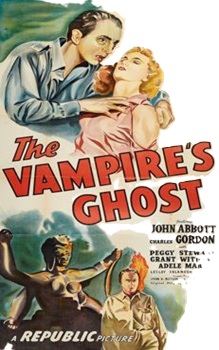Elderly one-handed pianist Francis Ingram (Victor Francen) gathers his live-in nurse Julie Holden (Andrea King), his roguish friend Conrad Ryler (Robert Alda), his eccentric secretary Hilary Cummins (Peter Lorre), and his lawyer (David Hoffman) to sign a document that later turns out to be his will. Julie secretly plans to leave due to Ingram’s oppressive crush on her which would mess up Hilary’s plans as he needs her to distract Ingram so he can do his astrological research. It also would affect Conrad who has fallen for Julie as well. That night Ingram dies falling down the stairs, which brings Ingram’s greedy relatives (Charles Dingle & John Alvin) to the villa, as well as Commissario Ovidio Castania (J. Carrol Naish). The commissario will have a good deal of work as the next few days bring a murder, mysterious piano music, and Ingram’s hand chopped off of his corpse. Is there a murderer in the house, or has the hand come to life?
The Beast with Five Fingers is both an Old Dark House Mystery and the first of the killer hand films, and I wish it had chosen one of those and stuck with it. I’d have liked to see it as full-on supernatural horror, but horror films were going out of style (only two American ones were made in the following three years), so we were back to the Scooby-Doo subgenre, where everything that seems spooky is really just part of an ingenious (and in most cases an impossible to pull-off) plot. Too bad as Lorre’s dealings with the hand are the best parts of the film.
If it was going to be a grounded Old Dark House Mystery, then it needed wild, eccentric, and fun characters, as well as a mystery that’s hard to figure out. Unfortunately, there are so few characters that there’s no question as to who is doing what. And those characters aren’t very interesting. Conrad is more or less the lead and hero, but he never does anything. He gets a few witty lines and is reasonably charming, but that’s it. Julie is a generic pretty girl written inconsistently, and the relatives are one-dimensional villain types. Lorre does his best to carry the film, but he’s not given enough to work with. The characters aren’t bad, but they lack the depth or chemistry to hold my attention through the non-mystery mystery.
The uneven script was credited to Curt Siodmak, which fits with Siodmak’s uneven writing output for the decade, from the superb The Wolf Man and I Walked With a Zombie to the less successful Son of Dracula and The Ape. The failings can more easily be laid at the feet of Warner Brothers management, which disliked horror and didn’t think a pure horror film was a good investment. After all, only the lower classes like horror. The epilogue, which laughs away the entire picture, was an edict passed down from on high. Director Robert Florey had enough style to pull off a horror-thriller, but was hamstrung by the studio and distanced himself from the finished product saying that all his ideas had been rejected. The only one behind the camera who managed to get top quality work in the film was composer Max Steiner, along with Bach and Brahms. Warners made almost no horror films in the 1940s, and here that inexperience, tied with contempt, sabotaged their project. With the talent involved, it could have been much better.






